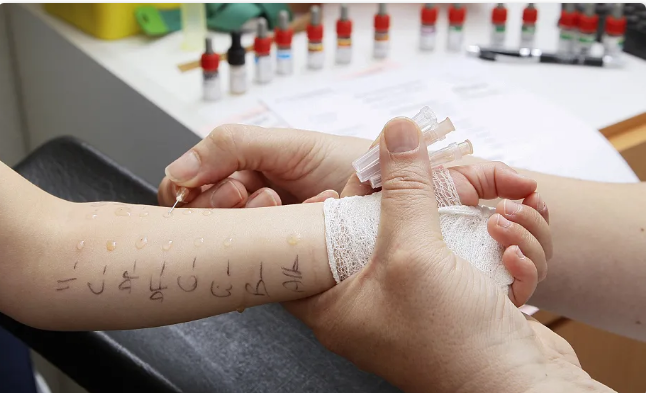A never-ending runny nose, tissues piling up, a reddened nose from constant wiping. Sniffling in class distracts everyone—teachers, classmates, and yourself. Nasal congestion makes breathing hard, ruining your performance on the basketball court or soccer field.

14-year-old Chengcheng has suffered from allergic rhinitis for years, with symptoms worsening in middle school.
During quiet classes, the sound of his nose-blowing stands out. A few sniffles are manageable, but during severe flare-ups, he can’t control it. By the end of class, he’s learned nothing, and his classmates are distracted too. Even PE class is a struggle—mouth breathing from congestion leaves him gasping after a few steps. Once a star basketball player, he’s now sidelined by his condition.
Xiaoyu, a young boy from Hangzhou, faces similar struggles.
His mom noticed he constantly rubs his nose, even during homework. Restless nights lead to daytime fatigue. At RenShu Medical, a nasal endoscopy revealed severe mucosal adhesion and blocked nasal passages—how could he breathe freely?
Both chose desensitization therapy.
What is desensitization therapy?
The only WHO-recommended causal treatment that can alter the natural course of allergic diseases.
STEP 01
Identify allergens through testing
In China, dust mites are the primary target. Testing methods include blood tests and skin prick tests.
RenShu Medical uses
skin prick tests (SPT): introducing allergens to observe skin reactions. Minimal pain, high safety, sensitivity, and reliability.
STEP 02
Administer allergen extracts
Purified allergen extracts are given regularly, starting with low doses/concentrations. Dosage gradually increases to stimulate immune tolerance.
STEP 03
Build allergen tolerance
Over time, the body adapts to allergens, reducing or eliminating symptoms upon exposure.
Advantages of desensitization therapy:
If you:
① Poor symptom control with medications/allergen avoidance
② Require high-dose/multiple medications
③ Experience medication side effects
④ Want to avoid long-term drug use
⑤ Aim to prevent asthma or rhinitis progression
Desensitization is optimal, especially for children—reducing steroid use and asthma risk.
Why isn’t it the first-choice treatment?
The answer lies in the
treatment duration.
Subcutaneous injections typically take
3–5 years, divided into
initial and
maintenance phases.
Initial phase: Weekly injections for 15 weeks.
Maintenance phase: Injections every 4–8 weeks.
Chengcheng and Xiaoyu are now familiar with the routine: booking appointments, visiting RenShu ENT, chatting with nurses and doctors, and heading to the injection room.
“We tried sublingual desensitization at age 8 but quit after six months. Without persistence, his rhinitis kept recurring, affecting his life and studies. Now, RenShu’s efficient process and caring staff keep him motivated.”
—Chengcheng’s mother
Chengcheng has completed the initial phase and entered maintenance. His nose-blowing has decreased, and he’s regained his energy for sports. Xiaoyu, after two years of therapy, rarely has flare-ups—only mild congestion during colds. Better sleep and focus have eased his parents’ worries.
“Even with mild symptoms now, we’ll finish the full course. True victory comes from persistence!”
Breathe freely after desensitization. Stop fearing flare-ups—tackle the root cause and bid farewell to allergic rhinitis
for good!
